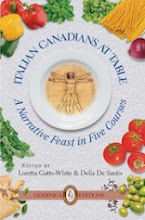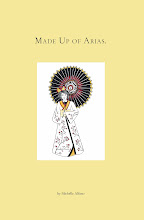 |
| Natalie Portman (as Jackie) and Jackie Kennedy |
Jackie (U.K., 2016) directed by Pablo
Larrain, 95 minutes
The film, a biopic
about the First Lady Jackie Kennedy, widow of JFK, specifically covers the period
directly following the assassination of JFK. But it is more than that - it is
an argument for the value of beauty and artifice in a troubled and unhappy
world with the invention of the concept of the JFK presidency as a sort of
Camelot first proposed by Jackie Kennedy herself. She was ideally suited for this - seemingly handpicked by Jack Kennedy
for her beauty, her style and appreciation of arts and culture to add a dimension of sophistication
to a previously lacklustre White House formerly peopled by the down home (and homely) Eisenhowers.
Jackie Kennedy, portrayed by the transcendentally
beautiful and talented Natalie Portman, meets the Journalist (Billy Crudup) who
is clearly meant to represent Theodore White (although he is unnamed here). Jackie had invited White to the
Kennedy compound in Hyannis on the weekend following the assassination for an
interview which was to become the basis of a Life magazine essay, dedicated
to JFK, on December 3, 1963.
The meeting depicted here is oddly hostile (if
accurate) - she is cold, he is at times withering and unsympathetic, bordering
on rude considering that she has just lost her husband in the most horrific
manner imaginable. It was in this conversation that Jackie Kennedy suggested
the image of the presidency of a sort of Camelot for Americans. (Later White
appeared to resent being ensnared in presenting this sentimental metaphor.) James Pierson
wrote a cogent piece on this on the 50th anniversary of the
assassination in 2013.
The film shifts from the
"present" (a week in November 1963 following the assassination) and
the "past" (Jackie featured in the first televised tour of the White House
in 1961). Initially, I thought it an odd juxtaposition but it appears shrewd and the heart of the film's premise as Jackie was used (or chose to present herself) as a symbol of a new sort of
Presidency - modern, sophisticated, cultured - and this extended beyond JFK's presidency well into his death, his funeral, and for decades afterward.
A complicated image of Jackie emerges in
the film: cynically accepting of JFK's dalliances but clearly very much in
love with him; carefully manipulative of her public image (refusing to allow
the Journalist to record that she smokes and other minor peccadilloes that might
besmear her ladylike, upper crust image); tough and determined not to be be bullied by LBJ's minions
in the aftermath of the assassination; persistent to the point of angrily aggressive
in formulating the funeral plans that followed; and, more poignantly, drunkenly floating her way through the
private residence of the White House dressed in the glamorous gowns
she wore as First Lady, with strains of Camelot blaring in the background.
Jackie defied the Kennedy family in
having JFK buried with the rest of the family rather than at Arlington with
military heroes. She resisted LBJ's people who insisted on a safe, less exposed
route to the funeral. She modelled the funeral on Abraham Lincoln's funeral who,
it appears, was very much on her mind as First Lady.
The director Pablo Larrain re-enacts the 1961
White House tour (lead by Mrs. John F. Kennedy) with a specific focus on Jackie's interest in Lincoln and his spouse Mary Todd
Lincoln. She repeatedly highlights the American historical artifacts and art that promote the value of these piece, emphasizing that these are equal to, or superior to, European art. During the tour (which may be viewed here in its entirety), Jackie, in her whispery, vaguely babyish voice, emphasized that Mary Todd was left destitute upon Lincoln's death
and had to resort to selling the furniture bought when she redecorated the
White House in 1861. She was reprimanded for her extravagances by her husband (wink wink to the modern viewer as Jackie was sometimes accused of the same). Jackie had made a point of retrieving the furniture purchased by Mary Todd and
bringing it back to the White House. She opens the cameras to the Lincoln bedroom, his office (used as an anteroom for Jack Kennedy), and shows a snippet of wallpaper from the room where he was carried to after being shot and died.
Pallbearers bore the casket of JFK to the East Room where the body of Abraham Lincoln also had lain a hundred years before. She
chose the draping of the coffin borne by a single horse drawn carriage and that
the mourners should walk to Arlington National Cemetery based on the Lincoln funeral
procession. She chose to publicly include the children in the ceremony and to
wear a traditional veil some might argue to bolster a heroic image, to create pathos
and an historical comparison to the greatness of the Lincoln presidency. She
knew the value of pomp and ceremony - she knew the value of beauty and artifice to
soothe a republic in crisis. For the America of November 22, 1963 was a broken and wounded thing and she sought to heal it, for personal reasons no doubt but also to protect the legacy that she and Jack Kennedy sought to build.
She knew the value of her role - if the comparison to Camelot and to the legacy of Lincoln was a myth, a beautiful mirage, it was a potent one that would sustain the nation. Jackie was well versed in playing the partner of an important and consequential man. She had been doing so since her first days as JFK's bride, and then wife and First Lady, at great personal cost.
If his (and her) sacrifice had not been significant, what, then, had it been for?











No comments:
Post a Comment